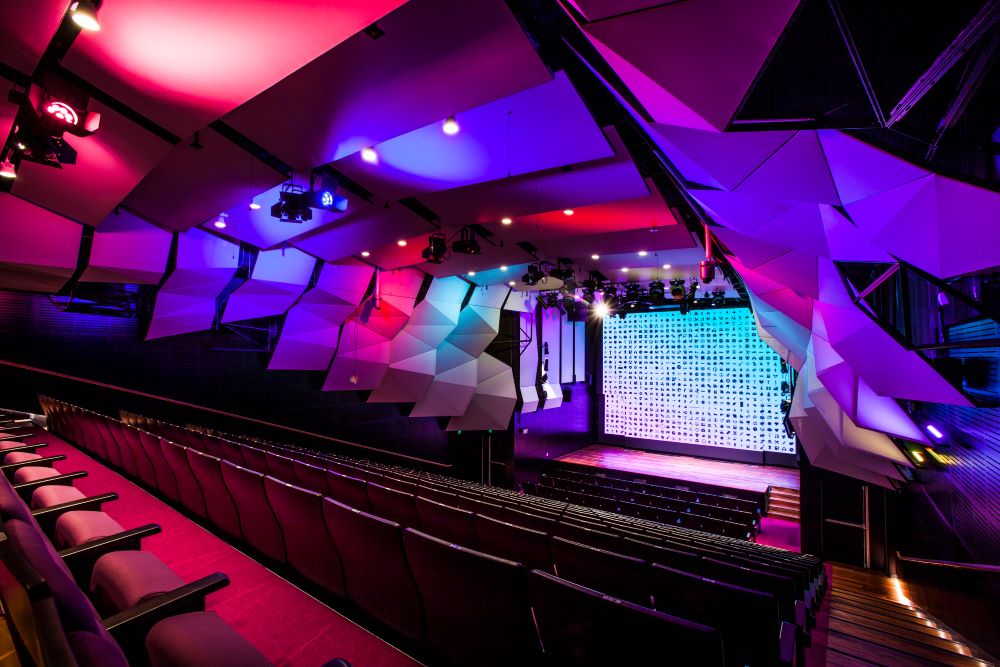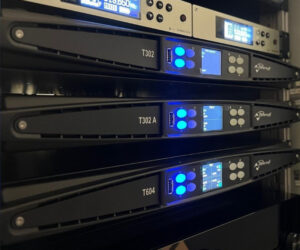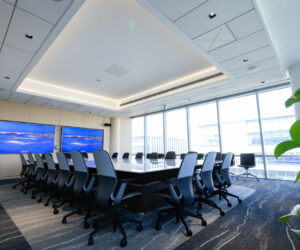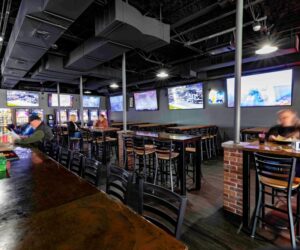Introduced in 2006, Meyer Sound is marking the 15th anniversary of its Constellation acoustic system, utilized in 27 countries on six continents in serving a range of applications that include classrooms, boardrooms, houses of worship, and restaurants alongside the technology’s initial focus on performing arts centers and music venues.
Constellation is an electronically adjustable room acoustic system that combines ambient sensing microphones, advanced digital signal processing, and a system of loudspeakers to modify the reverberant characteristics of a space. With the push of a touchscreen button, it can help tailor the room acoustic to achieve more optimum results for any type of event. At the heart of Constellation is the patented VRAS (Variable Room Acoustic System) created by New Zealand acoustician Dr. Mark Poletti.
“Constellation earned its outstanding reputation simply because it works so brilliantly,” says Constellation project director John Pellowe. “In the musical world, it offers unrivaled ability to enhance critical listening for both performers and audience. This ability, combined with its reputation for transparent, natural sound comparable with the world’s finest concert halls, has attracted praise from some of the world’s leading artists, including orchestral conductors like Michael Tilson Thomas, Vladimir Spivakov, Kent Nagano and Rafael Payare as well as musicians like pianist Leif Ove Andsnes and violinist Joshua Bell. They have fallen in love with Constellation because it allows them to hear the music they are making in an optimum environment, and audiences appreciate it for the same reason — though audiences may not even be aware of the system and the critical role it plays in their appreciation of a performance.”

Constellation provides flexibility across a wide spectrum of hall sizes and applications, from the 2,500 capacity Jakarta International Expo (JIExpo) Theatre to the Seattle Symphony’s intimate, low-ceiling Octave 9: Raisbeck Music Center, now transformed into a space for a variety of chamber and experimental music concerts. Constellation also expands dimensionality for immersive productions, including four resident Las Vegas productions of Cirque du Soleil and two by Dragone in China and Las Vegas.
The acoustical flexibility afforded by Constellation serves applications outside musical performance. In education, leading institutions like University of Copenhagen’s Maersk Tower research building and Sweden’s Karolinska Institute medical school are using it to allow more direct and intimate communication between students and professors in larger classrooms and lecture halls. It’s also employed to create multiple acoustical environments for research in human hearing at McMaster University in Hamilton, Ontario and Northwestern University in Illinois.
And, Constellation has been adopted to improve corporate communications in auditoriums (Telstra in Australia, for example) and boardrooms (Jyske Bank in Denmark), while also offering push-button options to convert the room into a performance venue for company or community music ensembles. And restaurants take advantage of the platform’s ability to help create more lively acoustical ambience while still allowing quiet conversations among patrons.

Constellation’s unique capability to transform any room’s acoustics allows architects to conceive spaces differently from the outset, according to John Pellowe. “The room acoustics are no longer dictated by the physical structure alone,” he says. “Architects now can design performance spaces with a lower room volume without compromising the acoustics. This not only reduces construction costs but also long-term energy use. More and more, we are finding new performance spaces designed from the outset for Constellation, as was the case with new halls in Norway, Estonia, and Indonesia.”
According to Constellation Design Manager Pierre Germain, that same flexibility can be applied to transform practically any structure into a viable performance space. “National Sawdust in Brooklyn was just that, a sawdust factory,” he notes. “SoundBox in San Francisco was a rehearsal space, and before that it was a warehouse. Increasingly, acoustical consultants realize that, regardless of what a building was originally intended to do, with Constellation we can make it do things acoustically it could never do before.”
Germain also credits Constellation’s reputation in the industry to the turnkey approach, with no reliance on third-party manufacturers outside of microphones conforming to Meyer Sound specifications made by DPA. “It all goes back to that core philosophy of John Meyer,” he concludes. “The more we can control in house, the more we can guarantee the end result.”





















